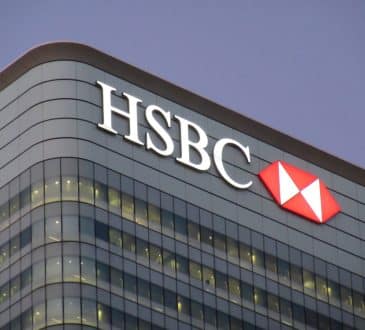START WITH THE END IN MIND: The Compelling Reason For Being In Business.

In fear of stating the obvious, the business environment within which we operate is in a constant state of flux brought about by aggressive macro-economic conditions in a hyper-connected global marketplace, accelerated by technology. There is a lot going on.
The scrutiny on investment and expenditure. The interrogation of risk assessments. The continual re-structuring of financial arrangements. The willingness of clients to chase the cheapest price. The continuing threat of substitutes in an increasingly competitive marketplace. The evolution of a tech-savvy and comfortably transient workforce. The sustained health and economic impact of a global pandemic.
Whatever the cause, the effects are similar across all industries and sectors.
These are only a few of the factors boiling away in a much larger pressure cooker of operating variables, and this environment requires business leaders to leave behind historical management practices and embrace a mindset of regular re-invention in order to capitalise on a dynamic and global business environment.
A leader without a compelling business story creating new opportunities out of current threats is simply a manager with a delusional plan, often simply adding 10% to last year’s profit and loss, defining it as strategy.
Strategy is a demonstration of leadership how. The two are inextricably linked, through forward thinking a way to a sustainable next.
Your Reason For Being.
The concept of co-creation remains foreign to many people that have not considered that in the context of establishing a unique value proposition, designing your methodology for adding value, constructing your implementation plan and even to building your talent pool to do all of that, that the concept of co-creation is the game changer.
It is collective seeing, thinking, planning and acting differently – multiple perspectives that generate diverse thought and potentially, multiple opportunities.
The mistake that many people make is that they go straight to strategy and in doing so they overlook ‘picking apart’ their organisational reason for being.
Often the reason that this happens is that these people are toiling away in the operational trench, the what and the how, and they have not understood their need to differentiate.
Similar to the concept of people before profit, when businesses are deliberate about prioritising purpose beyond profit and are effective in how they serve a broad cross-section of society, it is highly likely that bottom line upside will be a logical outcome.
What Success Needs to Look Like.
From a transformation perspective you cannot move forward if you ignore why it is you are where you are.
Before you step through detailed strategy creation a collaborative helicopter view plant the seed and kick-start the next level of strategy sensing.
You will need to identify your organisations problem(s) – the downside, articulate your deep fear or potential maximum fallout should these problems prevail. Keep it simple and don’t analyse this to the point of paralysis.
Acknowledge at a high level the mistakes that have been made. Call them challenges if the concept of mistake is too raw for you (although if you are going to move forward it shouldn’t be!). They might simplistically include a set and forget mentality, an irrelevant business plan, outdated technical resources, a cheapest price proposition, over-reliance on consultants, poor governance and risk management.
And don’t sweat it! As Oscar Wilde famously declared… experience is simply the name we give our mistakes.
Next we articulate what success looks like for us, what are your solution(s) – and to be clear, it is not simply removing your problems. It is your ‘purpose upside’ and therefore, the organisations ultimate prize.
What we are doing here is creating a vision for what success needs to look like by shifting current thinking from an isolated view of the problem through a much wider impact, opening up thinking around broader perspectives and ultimately a raft of potential solutions.
This initial piece of work is strategy sensing. It is not a strategy yet. It is all up for grabs, it simply paints a picture, a picture that will change by the time you get to the end of strategic planning process if there has been authentic and different thinking.
A Drag Race to The Bottom
You don’t want to start with this particular end in mind, however in (round numbers) across Australia in FY2019 there were 900 insolvencies per month, or around 45 per business day.
It is not uncommon for businesses to go it alone and undertake their own transformation according to their inside-out view of what success needs to look like.
Others may engage an expert and then take over implementation themselves because they know best…forgetting why they are where they are!
And others may simply commence but not complete because their similarly internal view informs them that they now have it covered.
Ok this may be a cynical view and it could be the exception and not the rule, but why not do it once, do it right and do it completely, to the point of reinvention?
This is all about co-creating a unique and compelling strategy. The success or not of any stage of any intervention sends a very clear message as to what success looks like for those around you firstly. Forget about what you think … it is actually all about what the customers who underpin your sustainability think, it’s also about what your people who implement and execute your business model think, it’s also about your supply chain’s reaction, and what your external finance and risk partners think in relation to ongoing support, for example.
Successful interventions will enhance your reputation and your ability to achieve your purpose. It will indicate to the world that you are in front of the game, that you are agile and that you are willing and able to optimise a dynamic business environment.
A Tactical Response Plan
We’ve managed businesses through economic cycles before; however, it is the frenetic pace of change and the urgency with which we must respond that makes each challenge more and more significant from both a leadership and a sustainability perspective.
Leaders and their frontline managers can be overly consumed by the business’ strategy and the business’ operational plan. However, in times of crisis, we need a pressure relief valve. And often, we need it yesterday!
How do we navigate the implied inflexibility of an over-arching strategy? And how do we maintain discipline across our operational fundamentals whilst doing so?
Whilst strategy is a bigger piece of collaborative work that should be happening in the background, mobilising a key cohort to create a shorter-term, interim tactical response plan will maintain momentum and ‘duck and weave’ whatever is thrown at the business.
In creating an interim Tactical Response Plan, consider the following:
Back to Basics. Identify the core business fundamentals critical to your immediate survival.
Generally, it is Customer, People and Financial that are the top three business imperatives relevant to crisis management. That’s not to say you should forget about other objectives such as technology, systems, and environment for example. Rather, that in crisis and transformation mode, these objectives are allocated a key internal person who will delegate specific actions, accountabilities and priorities separately.
- Customer is all about maintaining engagement, optimum delivery performance, and communicating your strategy around what success looks like for your customer.
- People is about the key internal and external stakeholders knowing exactly what success looks like for them and, in turn, incentivises their own, and ultimately the business’ performance. Success originates from unrequested discretionary efforts.
- Financial is business-specific; however, the actions that must be targeted is around cash and cost management – critical in supporting risk mitigation strategies.
Fixed Milestones. As these initial objectives dictate short-term, targeted, survival-orientated actions, compressed timeframes are critical in gaining transformation momentum.
- Prioritise objectives and actions to be resolved within say a revolving 10-day, 20-day and 30-day timeframe.
- Document clear objectives, actions, accountabilities, and measurements that progress through this cycle.
- Measure performance weekly – it is pointless assessing actions not achieved and 10 days overdue because then it is hardly tactical, and more than likely, too late.
Ultimately you need to ask yourself: how will I reliably and continuously feel or sense the business’ operational pulse? What needs to happen next, and by when?
Keep Crisis Management Simple
These suggested quick-wins and critical interventions will optimise your response to crisis management so that if something comes out of left field, then you will be armed with–
- Knowledge. Critical numbers accurately assessed.
- Adaptability. Streamlined systems and processes,
- Agility. Able to respond quickly and meaningfully.
- Options. You will have access to alternative strategies if you need it.
By applying these early interventions, you will have a clear strategy that has been designed from the outside-in and includes the following four key pillars–
- Meaningful Objectives. Deliver turnaround rather than an operational ‘to-do list’.
- Appropriate People. Capability that ensures action bring outcomes – you will have the horsepower to deliver on strategy.
- Manageable Performance. A daily, weekly, monthly regime of measuring achievement.
- Rigid Timeframes. To ensure that outcome and upside is achieved.
The message to reiterate is that preparedness and urgency are not only the key to any re-direction or intervention, they need to also become your business as usual.
Maintaining an almost subconscious, up-to-date and realistic picture of your key financial metrics (the “effect”) provides you with the best opportunity for informed, urgent and accurate decision-making ahead of time (in relation to the “causes”).
As a leader, you will not know everything – and that’s okay. However, you need to get yourself into this level of detail because it may be the only way that you will optimise and maximise whilst dealing with all the other day to day distractions.
Have you read?
World’s Best Universities.
World’s Best Fashion Schools.
World’s Best Medical Schools.
World’s Best Business Schools.
Bring the best of the CEOWORLD magazine's global journalism to audiences in the United States and around the world. - Add CEOWORLD magazine to your Google News feed.
Follow CEOWORLD magazine headlines on: Google News, LinkedIn, Twitter, and Facebook.
Copyright 2025 The CEOWORLD magazine. All rights reserved. This material (and any extract from it) must not be copied, redistributed or placed on any website, without CEOWORLD magazine' prior written consent. For media queries, please contact: info@ceoworld.biz








